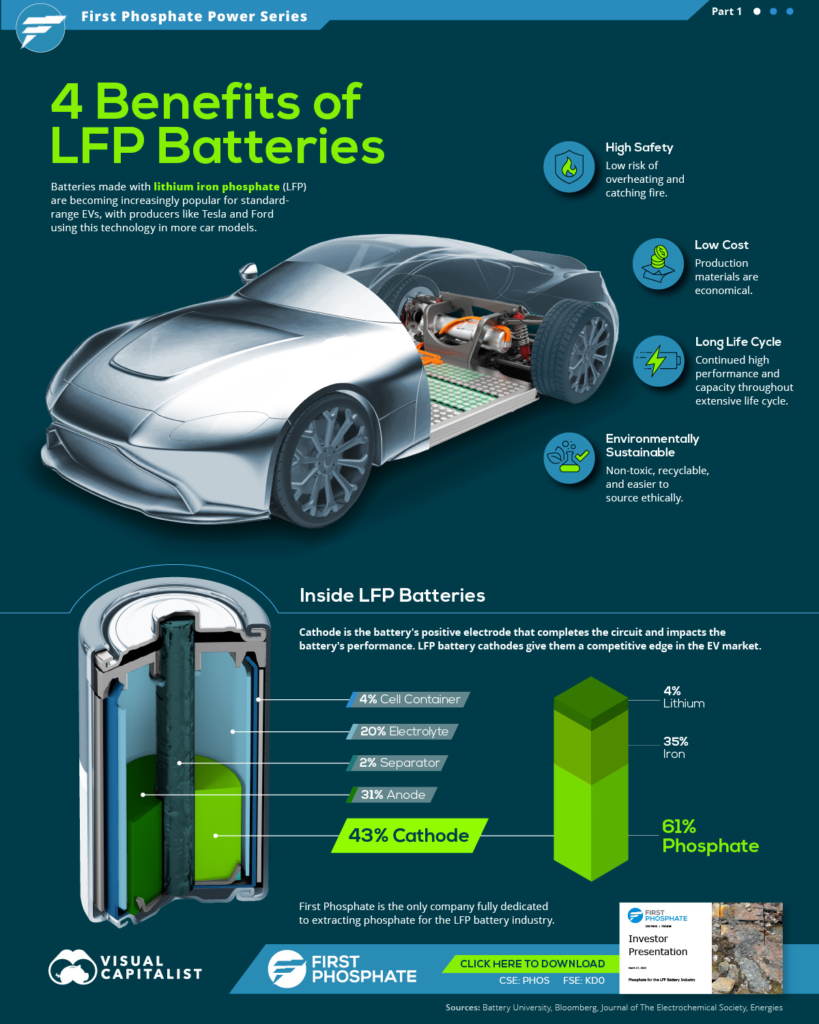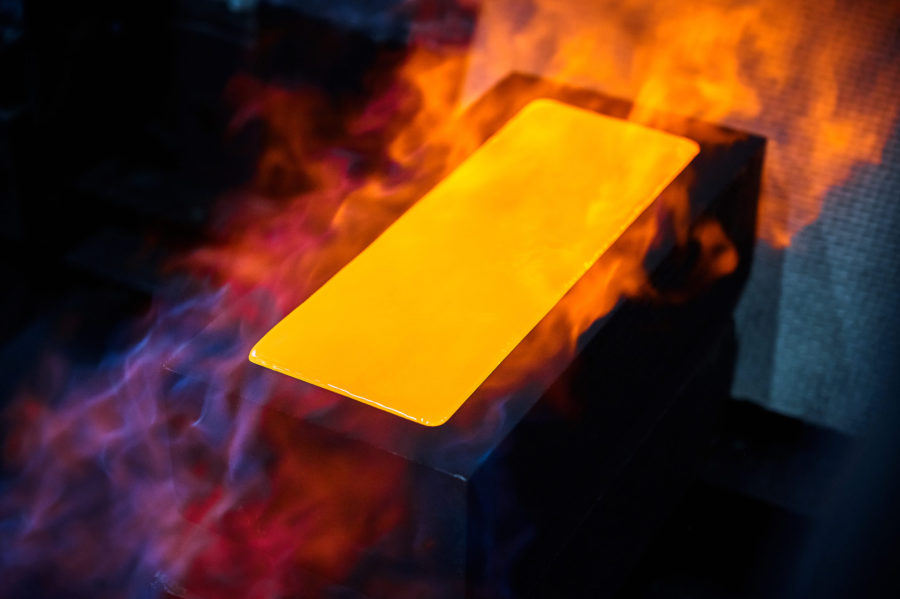4 benefits of LFP batteries for EVs

Even though the technology behind EVs has evolved significantly over the past decade, batteries have always been a critical component.
Lithium iron phosphate (LFP) batteries are becoming an increasingly popular choice for standard-range EVs, with major automotive producers like Tesla and Ford introducing LFP-powered vehicles into their catalog.
Benefit 1: Safety
LFP batteries are among the safest types of lithium-ion batteries, with a low risk of overheating and catching fire.
These batteries are less prone to thermal runaway and do not release oxygen if they catch fire, making them safer than other lithium-ion batteries.
Benefit 2: Long life cycle
LFP batteries have a longer lifespan than other types of lithium-ion batteries due to their low degradation rate. Meaning they can be charged quickly without significant battery damage, therefore leading to a longer lifespan.
LFP batteries can also withstand a larger number of charge and discharge cycles, meaning they can last longer before needing to be replaced.
Benefit 3: Cost-effective
The materials used to produce LFP batteries are also relatively cheap compared to other types of lithium-ion batteries.
The main cathode materials used in LFP batteries are iron and phosphate, and they are in relative abundance in contrast to other battery metals. This makes them a cost-effective option for a variety of energy storage applications.
Benefit 4: Environmentally sustainable
LFP batteries are environmentally sustainable because they are non-toxic and do not contain harmful heavy metals such as cobalt or nickel.
The materials used in these batteries are easier to source ethically, which makes them a more sustainable option than other types of lithium-ion batteries.
What’s inside the battery?
Most EVs utilize battery packs consisting of multiple individual battery cells. Similar to other types of lithium-ion batteries, LFP battery cells are made up of several components.

The cathode is the battery’s positive electrode and impacts its performance. It determines aspects such as energy capacity, charging and discharging speed, and the risk of combustion.
In LFP batteries, the cathode composition consists of three elements.

The LFP market share has significantly increased, reaching its highest share in the past decade at 30% of the market in 2022, according to the International Energy Agency (IEA).
(This article first appeared in the Visual Capitalist)
More News
{{ commodity.name }}
{{ post.title }}
{{ post.date }}

Comments